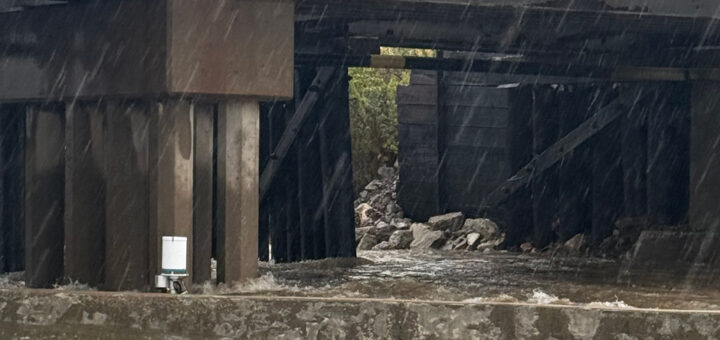Temperature profiling buoys will aid in Lake Superior research
0
In 2007, Jay Austin, professor of physics at the University of Minnesota Duluth, was an author of a report asserting that the surface temperatures of Lake Superior had risen at an unprecedented rate in the last 30 years. This month, Austin and his crew have set out with an 86-foot ship and the latest technology to continue their research.
Austin’s 2007 study found Lake Superior’s temperatures had risen by 4.5 degrees Fahrenheit on average in the last 30 years, an increase unmatched since routine measurements of the lake’s temperatures began in 1979. Now Austin and his crew have boarded UMD’s research vessel, the Blue Heron, to acquire new data on this modern phenomenon.
This year, however, the Duluth researchers are aided by a solar-powered monitoring buoy that will make data collection more efficient. The buoy, costing an estimated $75,000, is especially helpful because it sends information about air temperature, wind speed, and water temperature directly to the researchers’ lab in near real time. Austin’s team will be able to collect their own data from eight sites across the lake, including from two data buoys, with funding from the National Science Foundation and the National Oceanic and Atmospheric Administration.
The buoys were deployed earlier this month, each linked to more than 4,000 pounds of railroad wheels used as an anchor. In addition to wind speed, air temperature, and other factors, the probe measures water temperature at points spaced out in 30 feet increments from the surface to the 160-foot-deep lake bottom. Because data is sent directly to Austin’s computer, data collection is faster and more efficient.
Even with the assistance of the new technology, Austin said the most necessary component of his research is more data. Long-term patterns concerning climate change depend on accurate and comprehensive information. For example, Lake Superior’s surface temperature was measured in 1998 as 68 degrees Fahrenheit, a record high. Just last year, however, that record was broken with a temperature of 68.3 degrees. Comprehensive, continuous data is necessary to discover why these temperature anomalies are occurring and what implications they have for the future, Austin said.
Austin’s 2007 study already dispelled one myth about lake temperatures.
“The traditional thought was that there really wasn’t any carry-over from one year to the next with this kind of system. But it looks like there is,” said Steve Colman, Austin’s partner in the study and director of the Large Lakes Observatory at UMD.
Austin and Colman found that as the air and water become warmer, less ice is able to form. Because there is less ice, the water can become even warmer. As a result, less ice forms the next winter, and so on. More concrete conclusions concerning Lake Superior and potential signs of climate change for lakes in general depend upon continued data collection and analysis.
Minnesota researchers begin Lake Superior study [Duluth News Tribune] Lake Superior temps could reach record high soon [Minnesota Public Radio] Lake Superior, a Huge Natural Climate Change Gauge, Is Running a Fever [The New York Times] Probe generates deeper data from Lake Superior [Minnesota Public Radio]
NASA image courtesy MODIS Rapid Response Team, Goddard Space Flight Center.













